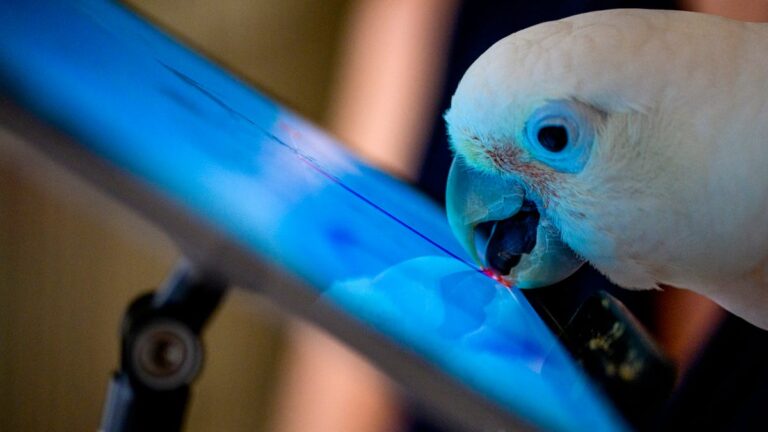Researchers are looking for ways to connect the estimated 20 million pet birds living in the United States with each other.
Parrots learn to call each other to improve socialization
These parrots have learned to call each other in an attempt by researchers to enrich their lives and improve socialization.
Ryan Ross, USA TODAY
Like humans, parrots can benefit from virtual connection with their peers.
Last week, researchers from Northeastern University, the University of Glasgow and MIT announced their new study, who observed that birds, given the choice, would call to each other.
“The answer, conveyed in delighted squeals and nods, was a resounding yes,” the statement said.
In the statement, a pet parent said his bird “came to life during the calls.”
The results suggest that these virtual interactions could help a domesticated parrot's behavior, improve communication in the wild and, most importantly, their well-being.
Participating bird owners reported a number of positive experiences for their technical pets – a social species that tends to live in large flocks – including new skills learned from their video friends, such as foraging, new vocalizations and flying.
The parrots were selected by researchers for their intelligence and other cognitive abilities, which are “equal to that of an early elementary school child.”
According to the University of Glasgow, Pet birds that feel isolated may develop psychological problems, which could manifest in rocking, excessive pacing and plucking of their feathers as a form of self-injury. The researchers wanted to know how people can help.
In the first phase of the study, 18 birds learned how to use their beaks to tap on a tablet screen, ring a bell, and then touch a picture of another pet parrot to call. Over two weeks, the participants made 212 video calls while the owners monitored their behavior.
If a bird showed signs of fear, aggression, or inattention before the maximum time allowed, the owner was instructed to stop calling. The birds engaged in most of the calls for the entire time – about five minutes – and some quickly became friends. Some parrots even formed attachments to other bird people after video calls.
“We were very careful about training the bird caretakers to ensure they could provide an appropriate level of support to empower their parrots but also help them avoid any negative experiences,” said study co-author, Rébecca Kleinberger, in a statement.
In the second phase of the experiment, 15 remaining participants were able to freely choose which birds to have interactions with. They made 147 video calls over three months, which provided key evidence supporting the researchers' theory – that the calls “were not random or simply based on the birds liking the bell.”
The parrots that received the most calls were also the ones that took the most initiative, “suggesting a reciprocal dynamic similar to human socialization,” the statement said.
Interactive map of spring hummingbird migration: Every state they'll arrive and feeding tips
Camille Fine is a modern visual producer on USA TODAY's NOW team.
What's everyone talking about? Subscribe to our trending newsletter to receive the latest news of the day



